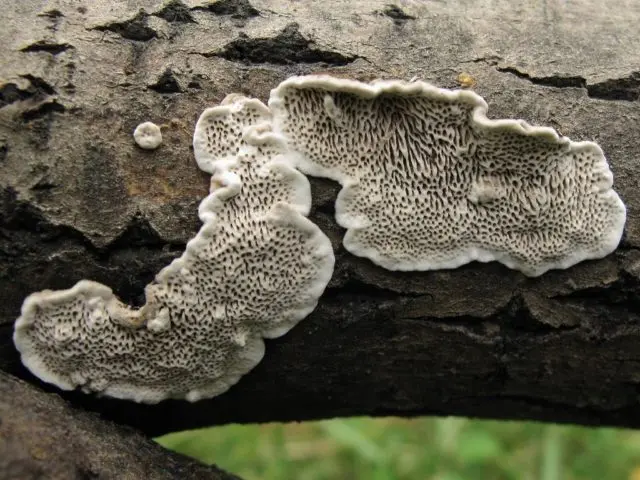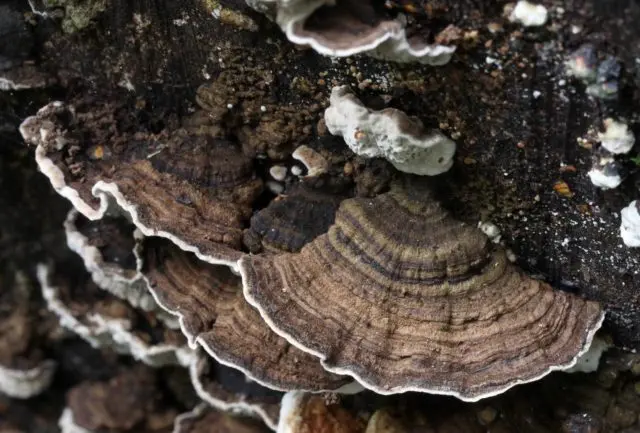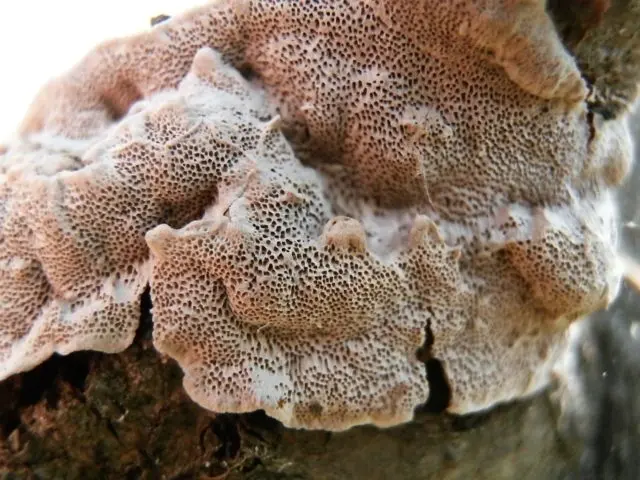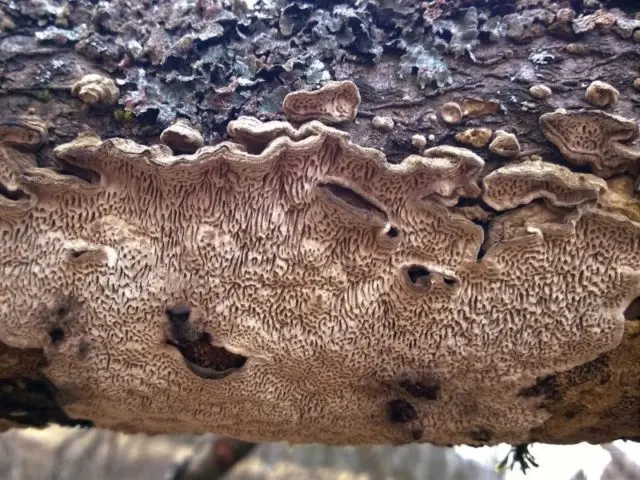Contents
Cerioporus soft (Cerioporus mollis) is a representative of an extensive species of woody mushrooms. Its other names:
- Datronia soft;
- The sponge is soft;
- Trametes mollis;
- Polyporus mollis;
- Antrodia is soft;
- Daedaleopsis is soft;
- Cerrena is soft;
- Boletus substrigosus;
- Sponge snake;
- Polyporus Sommerfelt;
- Lassberg sponge.
Belongs to the Polypore family and the Cerioporus genus. It is an annual mushroom that develops during one season.

The fruiting body has a very interesting appearance
What does soft cerioporus look like?
The young mushroom has an irregularly rounded shape in the form of a growth button. As the fruiting body matures, it occupies new areas. It spreads over large areas, up to a meter or more, often covering the entire available diameter of the host tree. The fruit body can take on a wide variety of bizarre shapes. The outer edges of the cap adhered to the wood are thin, slightly raised. Wavy-folded, often smooth, like wax, or velvety. The hat can have a length of 15 cm or more and a thickness of 0,5-6 cm.
The surface of the cap is coarsely rough, covered with velvety scales in young specimens. Has embossed notches. The colors are soft and very diverse: from white-cream and beige to coffee with milk, light ocher, honey-tea. The coloration is uneven, in concentric stripes, the edge is noticeably lighter. Overgrown soft cerioporus darkens to brown-brown, almost black.

Cap surface with characteristic embossed stripes
The spongy surface of the spore-bearing layer is often turned upwards. It has an uneven, folded structure with a thickness of 0,1 to 6 mm. The color is snow white or pinkish beige. As it grows, it darkens to gray-silver and light brown. In overgrown fruiting bodies, the tubes become pinkish-ocher or light brown. The pores are of various sizes, with dense walls, angularly irregular, often elongated.
The flesh is very thin, reminiscent of good skin. The color is yellowish-brown or brown, with a black stripe. As the fungus grows, it stiffens, the flesh becomes hard, elastic. A slight apricot aroma is possible.

White cobweb-like coating is washed off in the rain, leaving the pores open
Where and how to grow
Cerioporus softus is widely distributed throughout the Northern Hemisphere, although it is rare to find it. It is also found in South America. Settles on dead and rotting wood of exclusively hardwood – birch, poplar, beech, maple, willow, oak, alder and aspen, walnut. Can choose a damaged, drying tree, wattle fence or fence.
The mushroom picker bears abundant fruit from August until late autumn, when frosts set in. Undemanding to weather conditions, humidity and sun.

The fruiting body can sometimes be overgrown along the contour with green algae-epiphytes.
Is the mushroom edible or not?
Cerioporus soft is classified as an inedible species due to its hard, rubbery flesh. The fruiting body does not represent any nutritional value. No toxic substances were found in its composition.
Twins and their differences
The fruiting body of Cerioporus softus is quite easy to distinguish from other types of tree mushrooms due to the characteristic outer surface and pores. Similar twins have not been found.
Conclusion
Cerioporus soft settles exclusively on deciduous trees. It can be found in the forests, parks and gardens of Our Country, in areas with a temperate climate. Separate specimens of the colony, as they grow, merge into a single body of a bizarre shape. Due to the tough, tasteless pulp, it has no nutritional value. Classified as an inedible mushroom. The mushroom is easily recognizable at any time of the year, so it has no twins. Cerioporus soft is rare in Europe; it is included in the lists of endangered and rare species in Hungary and Latvia. The fungus gradually destroys the wood, causing a dangerous white rot.









